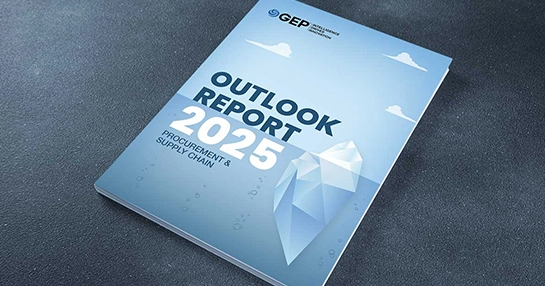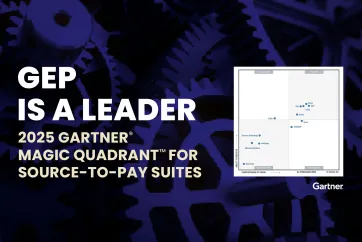
How AI and Automation Are Pushing the Boundaries of IT Contract Management
- IT procurement teams can leverage AI and automation to derive more value from vendor contracts.
- Not only can AI automate complex workflows in IT contract management, but it can also integrate external data to accurately forecast risks and supplier performance.
- Procurement can also customize AI models and train AI tools to provide context-specific recommendations.
February 07, 2025 | Contract Management 5 minutes read
Effective contract management is a key focus area for procurement teams. When used right, contracts streamline the buying process and help procurement stay compliant.
For seasoned IT procurement teams, a well-documented contract can be the difference between buying the right technology or equipment at the right price and overpaying for the same equipment or waiting a long time for delivery.
Recent advancements in AI and automation are set to make significant impact on IT contract management workflows. How can these advancements aid IT procurement and impact their routine work?
For procurement leaders already leveraging AI and automation in IT contract management, the question isn't what these technologies can do — it's how to maximize their potential.
The conversation now revolves around advanced strategies, overcoming adoption barriers, and extracting deeper value from these tools. Below, we explore how to take your IT contract management processes to the next level.
1. Moving Beyond Basic Automation: Advanced Use Cases
Intelligent Clause Negotiation
AI is no longer just about flagging risky clauses—it's about actively assisting in negotiations. Tools like natural language processing (NLP) can recommend alternative terms based on historical data or industry benchmarks. For example, if a supplier disputes a liability clause, AI can suggest modifications that align with market norms while protecting your organization's interests.
Dynamic Risk Scoring
Traditional risk assessment tools often rely on static parameters. Advanced AI systems now offer dynamic risk scoring, which updates in real time based on external factors like geopolitical changes, supplier performance trends, or regulatory updates. This allows procurement teams to respond proactively rather than reactively.
Top Tips:
- Use AI tools that integrate negotiation playbooks and provide real-time suggestions during discussions.
- Integrate external data sources (e.g., news feeds, compliance databases) into your AI system for richer risk analysis.
- Use dynamic risk scores to prioritize high-risk contracts for immediate review.
2. Leveraging Predictive Analytics for Strategic Decision-Making
Seasoned professionals understand the value of analytics—but predictive capabilities are where AI shines. For example:
● Supplier Performance Forecasting:
AI can predict whether a supplier is likely to breach contractual obligations based on past behavior, financial health, or market conditions.
● Renewal Optimization
Predictive models analyze historical renewal outcomes to suggest optimal timing and terms for renegotiations.
Top Tips:
- Develop dashboards that combine predictive analytics with actionable KPIs (e.g., likelihood of SLA breaches).
- Incorporate predictive insights into quarterly strategy reviews to refine procurement plans.
3. Driving Collaboration Across Stakeholders
One overlooked benefit of AI in contract management is its ability to foster collaboration between procurement, legal, and IT teams. Advanced platforms now offer shared workspaces where stakeholders can:
- Access real-time updates on contract status.
- Collaborate on clause revisions without version conflicts.
- Use AI-generated insights to resolve disputes quickly.
Top Tips:
- Implement collaboration tools that integrate with your existing contract lifecycle management (CLM) system.
- Set up role-based permissions to ensure sensitive information is accessible only to relevant parties.
4. Customizing AI Models for Your Organization
Generic AI models may not fully address the nuances of your organization's contracts or industry-specific requirements. Customizing these models ensures better alignment with your procurement goals.
Tailored Contract Playbooks
Train your AI tools using past contracts, dispute resolutions, and negotiation outcomes unique to your organization. This enhances the tool's ability to provide context-specific recommendations.
Industry-Specific Compliance Monitoring
For industries like IT, healthcare or finance, regulatory requirements are highly specialized. Customizing compliance modules ensures that all contracts meet sector-specific standards.
Top Tips:
- Work with vendors who offer customizable AI solutions rather than off-the-shelf products.
- Regularly update training datasets to reflect evolving business priorities or regulatory changes.
5. Overcoming Common Roadblocks in Adoption
Even experienced organizations face challenges when scaling their use of AI in IT contract management:
Data Silos
AI thrives on data—but fragmented systems prevent it from accessing the full picture. Breaking down silos between procurement, legal, and finance departments is critical.
Solution: Implement centralized CLM platforms that integrate seamlessly with ERP and CRM systems.
Resistance from Stakeholders
Seasoned professionals may resist relying too heavily on AI due to concerns about accuracy or loss of control.
Solution: Run pilot programs that demonstrate measurable benefits (e.g., reduced cycle times) before scaling adoption across teams.
6. Measuring ROI Beyond Cost Savings
While cost reduction is a common metric for evaluating AI adoption, advanced users should focus on broader KPIs such as:
● Contractual Compliance Rates
Measure how effectively contracts adhere to internal policies and external regulations post-execution.
● Cycle Time Reduction
Track improvements in time-to-contract across different stages of the lifecycle.
● Supplier Relationship Health
Use AI insights to assess whether contracts are fostering long-term partnerships rather than short-term gains.
Top Tip:
Develop a balanced scorecard that tracks both quantitative (e.g., cost savings, cycle time reduction) and qualitative (e.g., supplier relationship health, risk mitigation) metrics. Share these insights with stakeholders regularly to highlight the broader value of AI-driven contract management.
7. Preparing for the Future: Emerging Trends in AI for Contract Management
For seasoned professionals, staying ahead of the curve means anticipating future developments in AI and automation. Here are some trends to watch:
● Autonomous Contracting
AI is moving toward autonomous contracting, where systems not only draft and review contracts but also execute them based on predefined triggers. For example, a system could automatically initiate a renewal or terminate a contract if specific conditions are met.
● Generative AI for Negotiation Simulations
Procurement can use Generative AI models like ChatGPT to simulate negotiation scenarios. These simulations help procurement teams prepare for real-world discussions by testing different strategies and responses.
Top Tips:
- Start experimenting with conditional automation for low-risk contracts to test the feasibility of autonomous contracting in your organization.
- Use generative AI tools to create mock negotiation scenarios and refine your team's approach to high-stakes discussions.
8. Building a Culture of Continuous Improvement
Even with advanced tools, the success of AI in IT contract management depends on the people using them. Organizations must foster a culture of continuous improvement by:
● Upskilling Teams
Provide ongoing training on how to interpret and act on AI-driven insights.
● Encouraging Feedback
Create feedback loops where users can report issues or suggest enhancements for AI systems.
● Iterating Processes
Regularly review and refine workflows to align with evolving business needs and technological capabilities.
Top Tip:
Establish a cross-functional task force to oversee AI adoption and ensure alignment with organizational goals.
Also Read: Contract Management in Procurement
Driving IT Contract Management Transformation with AI
For procurement leaders in IT, the conversation around AI and automation has shifted from "why adopt?" to "how do we maximize impact?" The key lies in leveraging advanced use cases, customizing tools for your organization's unique needs, and staying ahead of emerging trends. By focusing on strategic implementation, collaboration, and continuous improvement, organizations can unlock the full potential of AI-powered contract management.
Remember AI isn't just a tool—it's a competitive advantage. By pushing beyond basic automation and embracing advanced capabilities, procurement leaders can transform IT contract management into a strategic driver of value, efficiency, and innovation.



